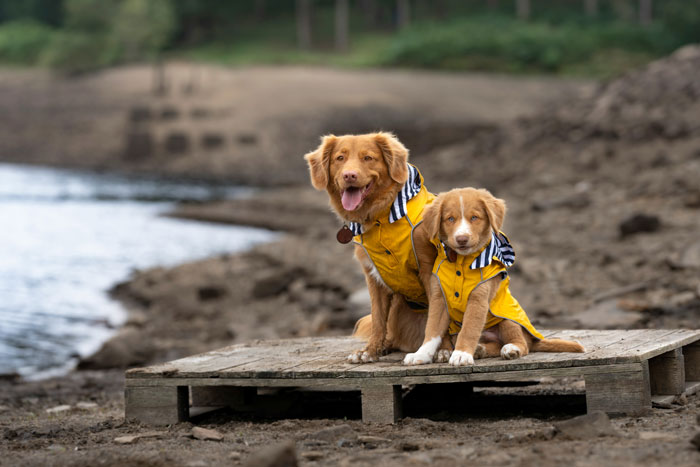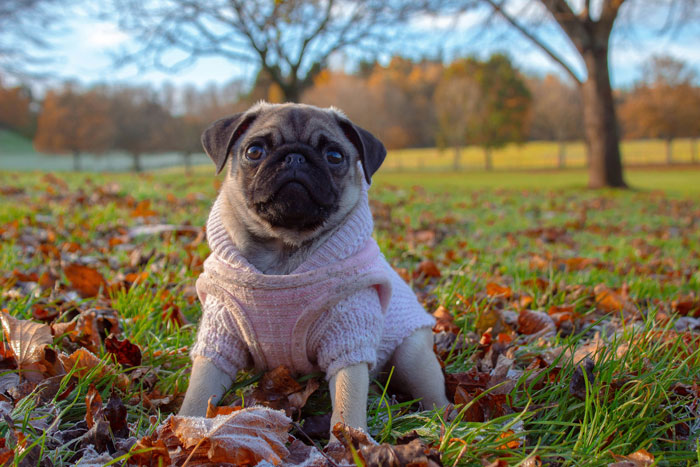Imagine stepping outside on a crisp winter day and noticing your dog shivering or showing signs of discomfort. While certain breeds are naturally equipped for colder temperatures, others may need additional protection from the elements.
This article will discuss the factors contributing to a dog’s need for a winter coat. We’ll guide you on selecting the appropriate coat and ensuring safe wear. Our goal is to help pet parents determine the best way to keep their dogs comfortable during those chilly winter outings.
HighlightsBreeds like Huskies and Malamutes often don’t need coats thanks to their thick fur.Below 32°F, most dogs, especially small or short-haired, benefit from a coat.A coat should fit snugly yet allow room for movement.
The information provided herein is for informational purposes only. Please refer to ourdisclaimerfor more details..
Table of ContentsFactors Influencing a Dog’s Need for a Winter CoatBreed: Built-in InsulationSize: It’s All About Surface AreaAge: The Young and the SeniorHealth Conditions: When the Cold Goes DeeperDetermining When Your Dog Needs a CoatTemperature GuidelinesBehavioral SignsChoosing the Right Dog Coat for WinterFit: Comfort is KeyMaterial: Choosing the Right WarmthFeatures: Function and FashionSafety Tips for Using Winter CoatsAlternatives to Winter CoatsConclusion: Do Dogs Need A Winter Coat?
Factors Influencing a Dog’s Need for a Winter Coat
Image credits:Jamie Street

Not all dogs are created equal when it comes to the cold. Here’s what impacts your dog’sneed to wear a winter coat.
Breed: Built-in Insulation
Dog breeds likeSiberian Huskies, Samoyeds, Bernese Mountain Dogs, and Alaskan Malamuteshave a double coat. This means a thick, wooly undercoat for warmth and a longer outer coat to repel moisture. It’s like their own furry winter jacket! These are the best dogs with thick coats for cold weather.
Short-haired breeds likeDobermans, Boxers, or Italian Greyhoundslack that protective undercoat. Their fur acts more like a t-shirt than a parka, leaving them more vulnerable to the chill.
Size: It’s All About Surface Area
Imagine a tiny cup of tea compared to a big pot. The smaller cup cools faster because it has more surface area relative to its volume. Small dogs have the same issue – they have lots of skin exposed to the cold in relation to their body size.
Dogs with lean bodies and short coats, such as Greyhounds, Basset Hounds, and Whippets, should also be kept safe from the cold weather.
Large dogs have a lower surface-area-to-volume ratio, helping them retain body heat more effectively.
Age: The Young and the Senior
Puppies:Their little bodies are still developing the ability to regulate temperature. Just like human babies need extra layers, puppies sometimes need help staying warm.
Health Conditions: When the Cold Goes Deeper
Arthritis: Think of how your own joints might feel stiff on a cold day – it’s the same for dogs! Freezing temperatures can make arthritis pain worse, so extra warmth is key.
Hypothyroidism: This condition means a dog’s thyroid doesn’t produce enough hormones, affecting their ability to regulate temperature. They often feel colder in general.
Other Conditions:Any condition that affects circulation, body fat levels, or overall health can make a dog more sensitive to cold temperatures.
Even if your dog falls into one of these categories, it doesn’t automatically mean they need coats. It’s always best to observe how they handle the cold. We’ll discuss signs to watch for in the next section!
Determining When Your Dog Needs a Coat
Image credits:Ashleigh Robertson

Look beyond the thermometer! Your dog’s behavior and these temperature guidelines will tell you when it’s coat time.
Temperature Guidelines
While there’s no single magic number, here’s a general guideline to get you started:
These are just guidelines! You need to pay attention to your dog’s individual needs.Winter dogslike tough Siberian Huskies have thick fur coats and might be fine without a coat even in slightly lower temperatures. While a sensitive Chihuahua might need one well before it hits freezing.
Behavioral Signs
Your dog is the best expert on how they feel. Look out for these signs that they’re getting too cold:
Choosing the Right Dog Coat for Winter
Image credits:Brian Jones

Find the perfect fit and materials to keep your pup cozy, safe, and stylish on winter walks.
Fit: Comfort is Key
Snug but not Tight:The coat for your dog should be snug enough to stay in place but not restrict movement. You should be able to comfortably fit two fingers between the coat and your dog’s body.
Measuring Matters:To get the right fit, you’ll need these measurements:
Material: Choosing the Right Warmth
Choose a material based on your climate and dog’s needs:
Features: Function and Fashion
Consider these handy features for added safety and convenience:
Tip: Many reputable pet stores have staff who can assist you in measuring your dog andchoosing the right dog coator sweater. Feel free to ask for help!
Safety Tips for Using Winter Coats
Coats are great, but they need supervision!Keep your dog warmand safe with these tips.
Alternatives to Winter Coats
Not a fan of coats? There are other winter gear to keep your dog warm during winter.
Conclusion: Do Dogs Need A Winter Coat?
Whether your dog needs a winter coat depends on a few things: their breed, size, age, health, and how well they tolerate the cold. The most important thing for dog owners is to pay attention to their furry friends! They’ll let you know if they’re comfortable or need a little extra help staying warm.
With a bit of careful observation and perhaps a stylish winter coat, you and your dog can enjoy those outdoor adventures all year round, no matter the temperature!
2Kviews2Kviews
Pet Wellness